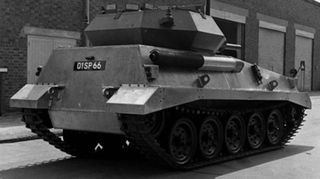GSR 3301 Setter
| |
This article requires additional modification. The design and/or content of this article do not conform to wiki standards.
|
GSR 3301 Setter
Mouse over "
[Client Values; Actual values in
| 1,310,000 |
| 830200 HP Hit Points |
| 7.3/84.7/8.5 t Weight Limit |
- Commander (Radio Operator, Loader)
- Driver
- Gunner (Loader)
| 200220 hp Engine Power |
| 58/22 km/h Speed Limit |
| 4042 deg/s Traverse |
| 27.446.81 hp/t Power/Wt Ratio |
| NoNo Pivot |
| // mm Hull Armor |
| 35/15/1540/15/15 mm Turret Armor |
AP/APCR/HE
AP/APCR/HE Shells |
50/2800/40
165/3200/215 Shell Cost |
| 75/75/100135/135/175 HP Damage |
| 110/180/30180/220/75 mm Penetration |
|
12 r/m ▲
10 r/m Standard Gun ▲ Rate of Fire Standard Gun |
|
900 ▲
Standard Gun
▼
Standard Gun
▲
1350 Standard Gun ▲
Standard Gun
▼
Standard Gun
▲ Damage Per Minute Standard Gun |
|
0.4 m ▲
0.38 m With 50% Crew: 0.496 m ▲ Accuracy With 50% Crew: 0.471 m |
| 2.1 s 1.8 s Aim time |
| 4042 deg/s Turret Traverse |
| 360° Gun Arc |
| -10°/+15°-10°/+15° Elevation Arc |
| 7435 rounds Ammo Capacity |
| 2020 % Chance of Fire |
| 360 m 370 m View Range |
| 400 m 600 m Signal Range |
VII

1310000
The GSR 3301 Setter is a British tier 7 light tank.
In 1964, the General Staff laid out the requirements for a new battle reconnaissance vehicle. Research and development, a full-scale prototype, and two stands for testing engineering solutions (one for testing of the cooling system, the other for testing the suspension and transmission) were finished in 1965. Further development resulted in the production of CVR(T) vehicles and their adoption into service with the British Army.
The GSR 3301 Setter leads to the LHMTV.
Modules / Available Equipment and Consumables
Modules
| Tier | Engine | Engine Power (hp) |
Chance of Fire on Impact (%) |
Weight (kg) |
Price (
| |
|---|---|---|---|---|---|---|
| VI | Cummins BTA 5,9 | 200 | 20 | 431 | 24000 | |
| VII | Jaguar 4,2 XK6 | 220 | 20 | 496 | 33500 |
| Tier | Suspension | Load Limit (т) |
Traverse Speed (gr/sec) |
Rmin | Weight (kg) |
Price (
| |
|---|---|---|---|---|---|---|---|
| VI | GSR 3301 Setter | 8 | 40 | B/2 | 1400 | 13500 | |
| VII | GSR 3301 Setter Phase II | 8.5 | 42 | B/2 | 1400 | 19400 |
Compatible Equipment
Compatible Consumables
Player Opinion
Pros and Cons
Pros:
- Excellent top gun penetration on all types of ammunition
- Second best Power/weight ratio in class, only below Hotchkiss EBR
- Great gun depression
- Small size and above average camo
Cons:
- Worst in class DPM
- Worst in class alpha
- Second worst traverse speed in class
- Second worst top speed in class
- Very vulnerable to ramming
Performance
An extremely unforgiving light tank to play, the Setter is widely regarded as one of the worst Tier VII light tanks in the game due to its extremely poor DPM, alpha damage, ammo capacity and speed. In order to make this tank even useable one must rely on its biggest advantage - its size. The Setter is very small, even by light tank standards, and is therefore very easy to hide and fairly hard to hit at range. Because of this small stature, its camouflage value is excellent and allows for aggressive plays without being seen. There you can harass enemies from unexpected flanks or spot effectively for your team. The camouflage rating this tank has, combined with a skilled crew and a camo net, certainly makes this tank an extremely effective passive scout.
When required, the gun can be put to reasonable use, so long as you keep your distance. The excellent penetration of the gun beats out even some tank destroyers at its tier, and can engage some higher tier heavies from the front if aimed correctly. The DPM may be worst in class, but you can at least serve to distract opponents, or slowly whittle them away. Just because you have a bad gun, doesn’t mean you shouldn’t use it at all!
Be warned however, this tank is completely incapable of fighting almost any target that decides to hunt it down. The gun may have excellent penetration and good handling, but everything else about it is well below average. The American T71 CMCD has not only higher alpha damage, but a better rate of fire and APCR ammunition as standard. Even lower tiered tanks will easily rip you to shreds if you are caught out. ALWAYS keep at range so that you cannot be outtraded by other light tanks who know of your terrible DPM. Whilst this may be quite backwards in tradition with normal light tank gameplay, for this tank it is absolutely essential to prevent you dying early on and achieving very little. Only make plays if you know you can escape without being chased. NEVER rush into a fight that you can’t win, as you will always die first if not.
Much like the rest of the tanks down this line, this tank is not recommended unless you are very familiar with game mechanics and how to play light tanks. Even for an experienced player can and will struggle with this tank due to how dreadful the combat capacity is. Not recommended as a first light tank line to play.
Suggested Equipment
External Reviews and Opinions
Gallery
Historical Info
My primary reference for these vehicles is this image. This appears to be the CVR(T) prototype pictured here, which would be adopted into service under the much better known name "FV101 Scorpion".
The name comes from General Staff Requirement (GSR) 3301, which was issued in August 1964 for the Combat Vehicle Reconnaissance (CVR). I have no idea where the moniker "Setter" comes from.
The CVR took two directions with the separate development of Tracked and Wheeled vehicles. These were to be highly mobile and light enough to be both air-droppable and air-transportable; this allowed for a weight of around 8 tons. Additionally, a maximum width of 2.1m was specified.
The FVRDE (Fighting Vehicle Research and Development Establishment) had been working on a next-generation of vehicles for some time, having just finished the TV 15000 test vehicle, which they used as the basis of a new vehicle to meet this requirement. This featured many innovations, such as aluminum armor and a hydropneumatic suspension. The transmission was adapted from the one used in the Chieftain tank, and reportedly its designer had a nervous breakdown trying to figure out how he had made it work. The mobility test rig was ready in 1966, with a contract for 17 prototypes being issued the following year. Trials began in 1969, with the vehicle ultimately being accepted into service in 1970.
Historical Gallery
Historical Accuracy Errata
*Setter is prototype of FV101 Scorpion
- 6.pdr gun is fake configuration
- 75mm HV L/40 gun is incorrect configuration
- Real gun was 76mm Lightweight gun L23A1
- The vehicle is much slower in the game, 58 kph in game, 80 kph in real life



















